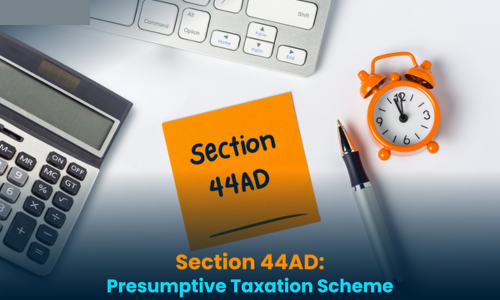In this article, we will discuss about...
Introduction
What if I told you there’s a legal way to pay zero tax even if you earn up to ₹50 lakhs a year?
Sounds impossible, right?
But it’s not. It’s smart tax planning using something called MTF — Margin Trading Facility.
MTF can help you boost your stock market returns and reduce your tax bill — even to zero.
In this Article, I’ll walk you through how this works, step by step. We’ll use simple examples, explain the rules clearly, and show you how to use this strategy legally and effectively.
Don’t let reading hold you back, Watch our video instead
What Is MTF?
MTF stands for Margin Trading Facility. It’s also known as a “Pay Later” scheme.
Here’s how it works:
Let’s say you want to buy ₹2 lakhs worth of stocks, but you only have ₹50,000. With MTF, your broker lends you the remaining ₹1.5 lakhs.
Of course, you’ll pay interest on the borrowed money — just like any loan.
MTF is useful when you believe the market will go up and want to hold stocks for the long term.

Who Can Use This Strategy?
Now, this is important:
This strategy is NOT for salaried individuals.
If your only income is salary, this won’t work for you.
But if you’re any of the following, you’re good to go:
-
Self-employed professionals (like doctors, lawyers, consultants, freelancers, etc.)
-
Business owners and traders (like shop owners, online sellers, etc.)
-
Anyone earning income under “Business or Profession”
How MTF Saves You Taxes
Let’s break it down with an example:
Suppose you earn ₹48 lakhs a year from your business or profession. You also earn a bit more (say from interest or dividends), so your total income is close to ₹50 lakhs.
Now, assume you’ve built a stock portfolio worth ₹5 crore. Out of this, ₹2.5 crore is bought using MTF at 10% interest.
So you pay ₹25 lakhs per year as interest to your broker.
Here’s the trick:
Since you’re using MTF for business-related investing, that ₹25 lakh interest is treated as a business expense.
That means:
₹48 lakhs income – ₹25 lakhs expense = ₹23 lakhs taxable income
Already, your tax burden has dropped significantly.
But let’s go even further.

Use the Right Tax Scheme
Based on what you do, you can choose one of two simple tax options under the Income Tax Act:
1. If You’re a Professional – Use Section 44ADA
This is for professionals like:
-
Doctors
-
Lawyers
-
Consultants
-
Chartered Accountants
-
Freelancers
Here’s how it works:
-
You declare only 50% of your income as profit
-
No need to show actual expenses
-
No books of account required
So, from ₹23 lakhs, you only pay tax on ₹11.5 lakhs.
Now subtract standard deductions like:
-
₹10,000 on savings account interest (Section 80TTA)
-
₹50,000 for NPS investment (Section 80CCD(1B))
Your taxable income = ₹11.9 lakhs
And guess what? From FY 2025–26, income up to ₹12 lakhs is tax-free under the new regime!
You just paid zero tax on ₹50 lakh income — legally.
2. If You’re a Trader or Business Owner – Use Section 44AD
This is perfect if you’re:
-
Selling goods
-
Running an online store
-
Trading products/services
Here’s how Section 44AD works:
-
You declare just 6% of your turnover (if received digitally)
-
Applies for turnover up to ₹2 crore
-
No books, no audit
So, even if you earn ₹2 crore in sales, you only pay tax on ₹12 lakhs profit.
With deductions, your taxable income can drop below ₹12 lakhs — and once again, no tax to pay.

Is This Legal?
Yes — 100% legal.
The Income Tax Department allows this, as long as you follow these simple rules:
1. Keep separate demat accounts
-
One for long-term investments
-
Another for MTF/trading activity
2. Be consistent
-
If you treat MTF as business income, stick to it every year
-
Don’t switch between “capital gains” and “business income” for tax advantage
3. Claim MTF interest as a business expense
-
Just like rent, salaries, or internet bills
If you follow these steps, you’re using the law — not bending it.
Selling Your Portfolio Smartly
Let’s say your portfolio grows a lot over 3 years. Should you sell everything at once?
Nope — that could increase your tax bill.
A smarter move is to sell gradually:
-
Sell ₹20 lakhs this year
-
Sell ₹30 lakhs next year
-
Time your sales when your other income is low
This way, you reduce taxes and keep your income within lower tax slabs.
Since your MTF profits are treated as business income, you can plan your withdrawals like a business owner manages cash flow.
Quick Checklist to Stay Compliant
Here’s what you should do to make this strategy work smoothly:
-
Open a separate demat for MTF trading
-
Always treat MTF as business activity
-
Claim interest as a business expense
-
File taxes under Section 44ADA or 44AD
-
Use deductions like 80TTA and 80CCD
-
Don’t switch tax treatment year to year
-
Keep records of MTF interest and trades
Conclusion
This method isn’t widely known yet, but it’s a brilliant way to legally pay zero tax — if you plan smartly.
By combining:
-
MTF interest as a deductible expense
-
Presumptive taxation (Section 44ADA or 44AD)
-
Smart portfolio selling
In this how will the gains from MTF stock is calculated for taxation.
How is the turn over calculated (for declaring 6%) under section 44AD?
Please take consultation you will get proper clarification.
Kindly connect with cs@aktassociates.com or call at 8080088288. For more detail.
It is total sales or gross receipt